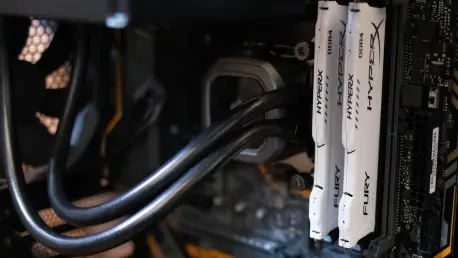The tech industry is currently grappling with a paradox where, despite the seemingly endless rows of servers sitting idle, there is a significant shortage of compute power needed for rapidly evolving AI workloads. The demand for GPUs is escalating at an unprecedented pace as artificial intelligence applications require more resources, yet power constraints and sustainability concerns continue to hamstring operations across data centers. This issue is pronounced among Tier-2 cloud service providers, where unleased and underutilized servers abound. The utilization gap between idle resources and rising demand presents a unique opportunity in the cloud computing space that new players are eager to address. The Kinesis Network emerges as a hopeful contender, seeking to harness these idle resources effectively.
The Promise of Idle Compute Power
Kinesis Network’s vision centers on repurposing idle server capacity to meet the growing demand for GPU-intensive AI tasks. By pooling underutilized compute resources across various vendors, Kinesis aims to create a cohesive network that bridges fragmented supply with burgeoning demand. The concept isn’t entirely novel; prior efforts have attempted similar models with varying degrees of success. Startups like Akash Network and Hivenet have explored this market’s potential, with analysts projecting substantial growth in coming years as companies seek efficiency and sustainability. While the idea holds considerable promise, the challenge lies in persuading compute suppliers to embrace this model and integrate it into their operations.
The allure of Kinesis is its enterprise-centric approach, which promises to smoothly integrate its software across large operations without disrupting existing systems. The orchestration layer that Kinesis utilizes seeks to tackle the complexities inherent in pooling compute power from disparate sources, reducing the friction often associated with such initiatives. As enterprises struggle with resource wastage, Kinesis’s method offers a viable solution by presenting a streamlined integration process that minimizes operational burdens. This focus on ease of use and seamless integration distinguishes Kinesis from earlier attempts that often stumbled over logistical hurdles.
Overcoming Industry Resistance
Convincing both suppliers and buyers to adopt Kinesis’s model requires tackling entrenched industry skepticism and inertia. Despite the growing interest in maximizing resource efficiency, many organizations remain hesitant to shift from their established routines. Addressing these concerns forms the crux of Kinesis’s strategic approach. The company advocates for licensing its software, enabling enterprises to optimize idle compute resources globally without perturbation. This approach not only highlights the potential for efficiency gains but also underscores the sustainability benefits pivotal in modern data center operations.
Kinesis’s strategy includes the development of a Web3-oriented compute exchange system, aiming to streamline transactions and resource allocation. The benefits extend beyond mere resource maximization; the model also promises to significantly reduce power consumption and costs by shifting computational tasks to less utilized resources. This innovative exchange system aids in aligning resource allocation with demand more precisely, preventing the operational inefficiencies often seen in conventional systems. Such advances illustrate Kinesis’s potential to reshape cloud computing, acknowledging both economic and environmental imperatives driving industry change.
A Path Forward
Kinesis Network envisions transforming idle server resources into a powerful engine for fulfilling the increasing demand for GPU-driven AI workloads. By harnessing underused compute power from a variety of vendors, Kinesis aims to forge a seamless network that marries fragmented supply with rising demand. Although not groundbreaking, this approach has been explored by startups like Akash Network and Hivenet, suggesting significant industry potential as the market seeks enhanced efficiency and sustainability. The key challenge remains convincing compute suppliers to adopt and integrate this model into their standard operations.
The appeal of Kinesis lies in its enterprise-focused strategy, which ensures easy integration of its software within large-scale systems, avoiding disruption of existing frameworks. Kinesis employs an orchestration layer to manage the complexities of uniting compute resources from diverse origins, lowering the common barriers associated with these undertakings. As businesses grapple with resource inefficiency, Kinesis’s user-friendly integration becomes a compelling solution, differentiating it from prior efforts that often faced logistical challenges.









